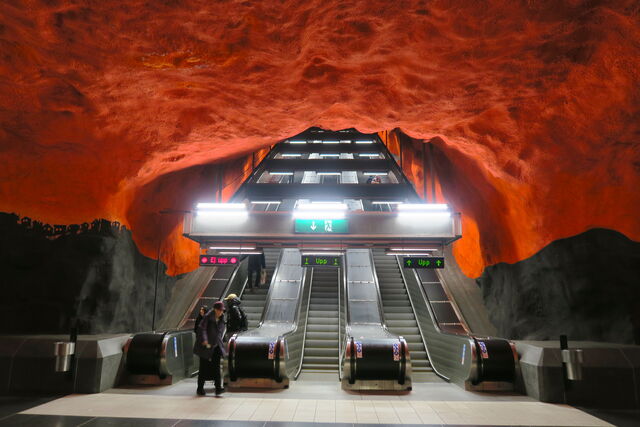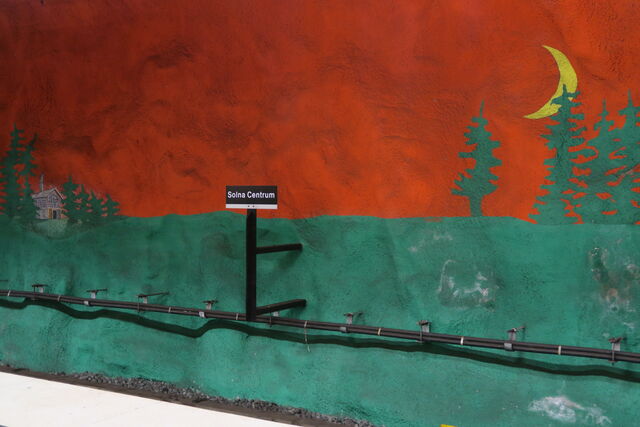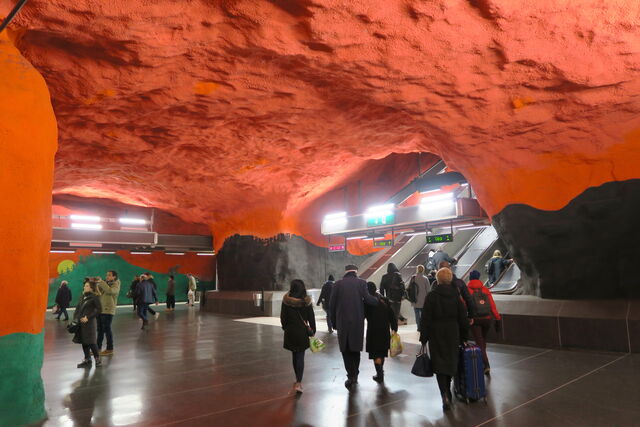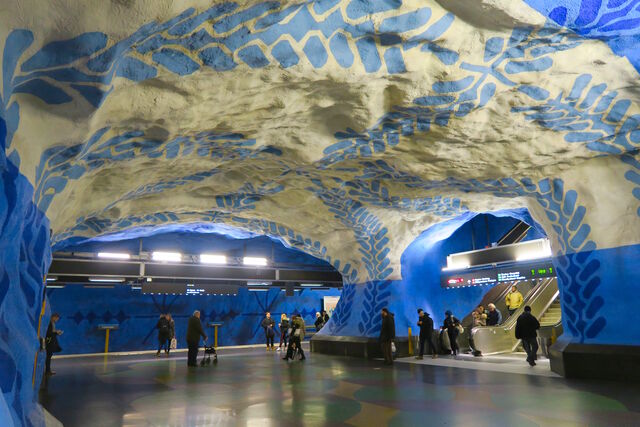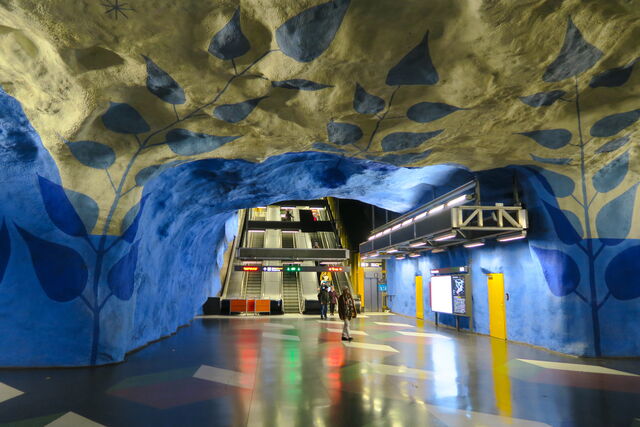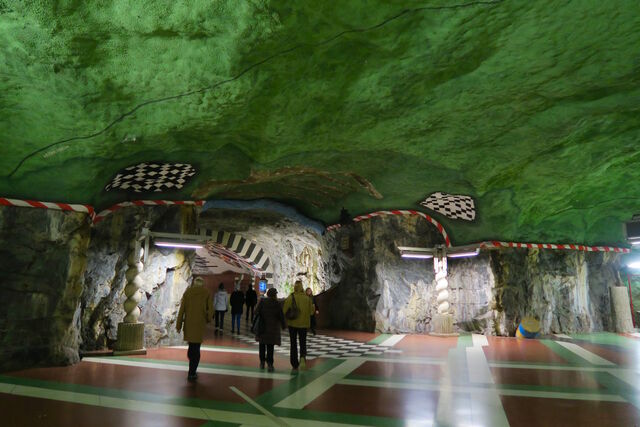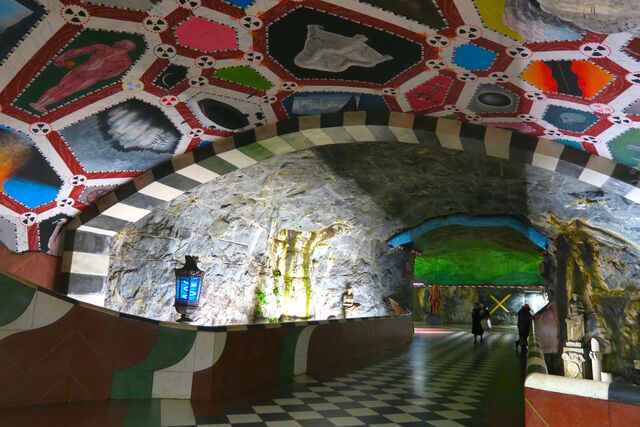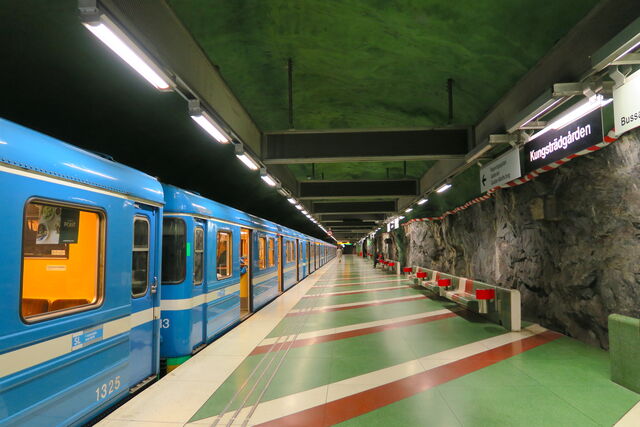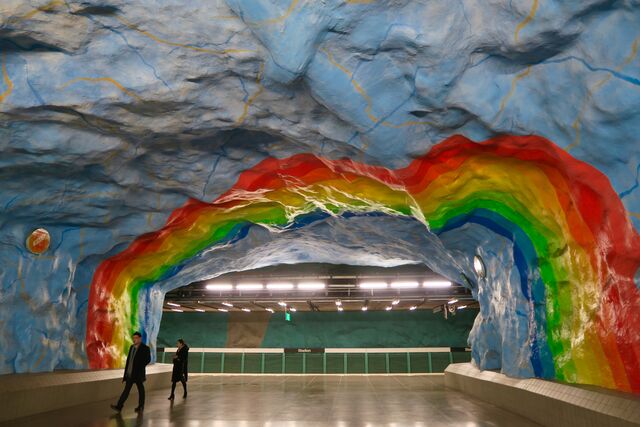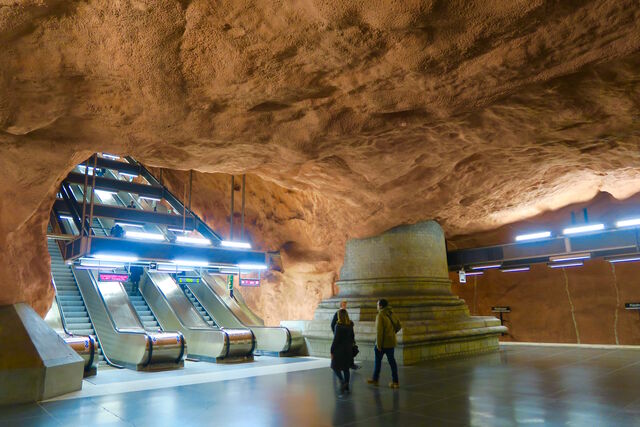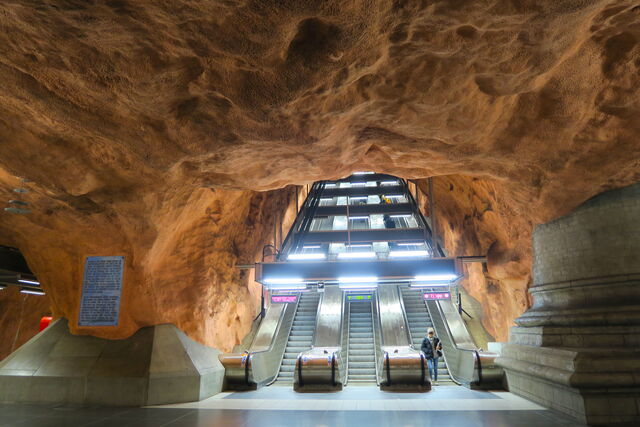In December 2018, I spent a rainy afternoon in Stockholm exploring the city’s unique metro stations. Over 90 of the network’s 100 stations are decorated with paintings, rock formations, and installations. After purchasing a 75 minute time-based ticket, I travelled along each of the metro’s three lines, alighting whenever the train arrived at a station that looked particularly impressive.
Solna Centrum Station
My personal favourite station, Solna Centrum, is nicknamed the “Gates to Hell” with its exposed rock walls covered in aggressive blood red and black paint. Elsewhere, splashes of green represent the forest against a backdrop of the red evening sun.
T-Centralen Station
T-Centralen Station – the only station where all three of the metro’s lines meet – is notable for the painted blue leaves which decorate its exposed rock walls.
Kungsträdgården Station
Another highlight was Kungsträdgården Station (Swedish for “King’s Garden”). With its bright green paint and checkered patterns, the station is the deepest in Stockholm’s metro system. Interestingly, the station is also notable for its unique flora and fauna. In fact, it is the only place in Northern Europe where the Lessertia dentichelis spider can be found. It is thought that the spider arrived in the station on machines which were brought in from Southern Europe during the station’s construction in the mid-1970s. A previously unknown fungus was also discovered on the station’s walls in 2016.1
Stadion Station
Stadion Station appeared to be one of the most popular in Stockholm’s metro system for photographers. A rainbow archway, stretching across a tunnel that links the station’s two platforms, is set against a sky blue backdrop. The rainbow’s colours are apparently a nod to the olympic rings, with Stadion Station serving the nearby Stockholm Olympic Stadium which was constructed for the 1912 Summer Olympics.
Rådhuset Station
Finally, Rådhuset Station is notable for its organic architecture and earthly brown tones. The station’s concrete columns are a reference to the court house which lies directly above the station’s surface.
Catherine McCormack, The Art of Looking Up (White Lion Publishing, 2019) 93. ↩︎
